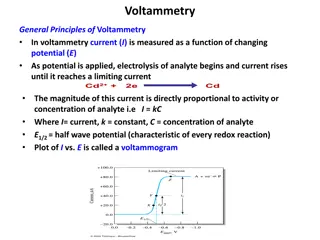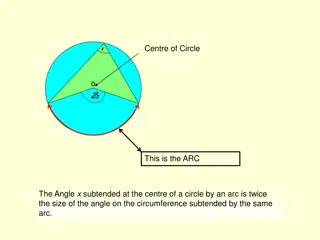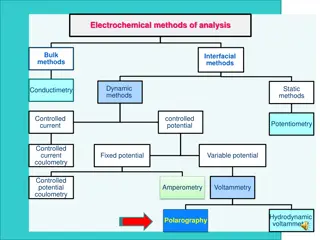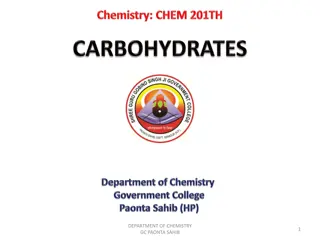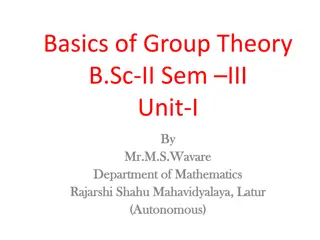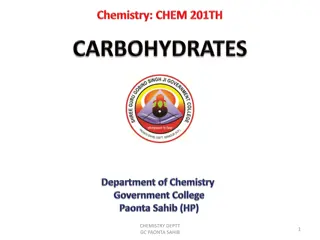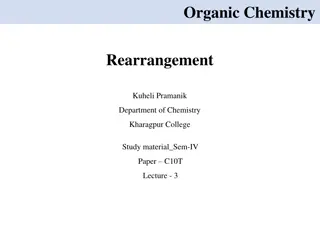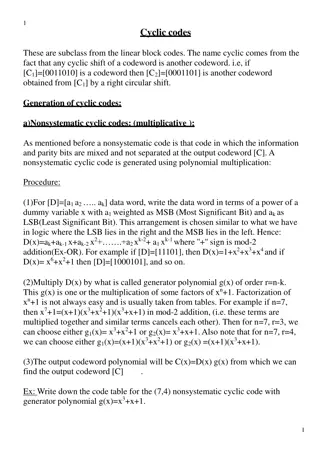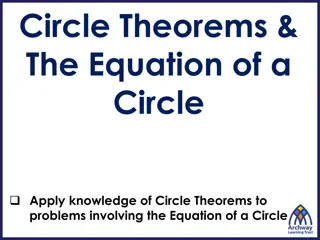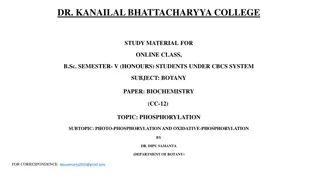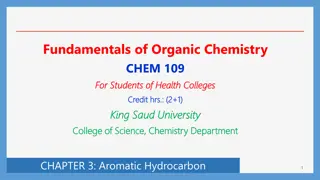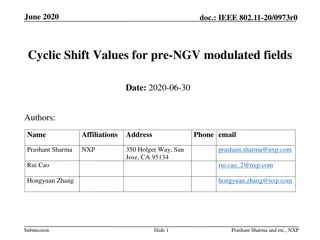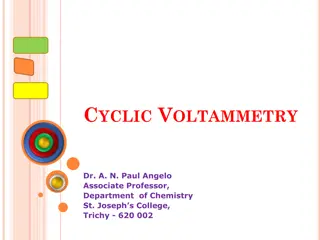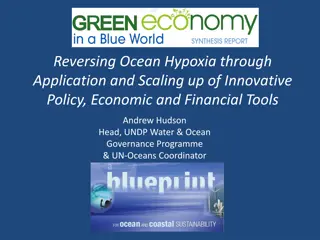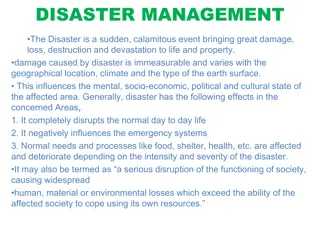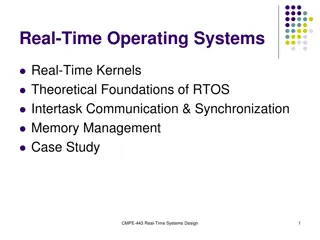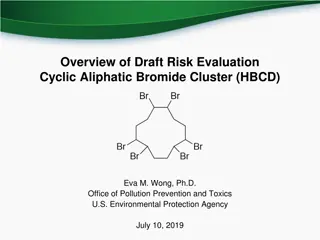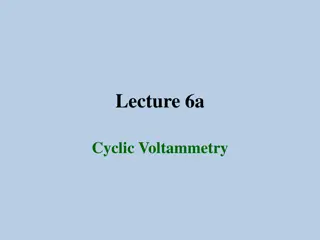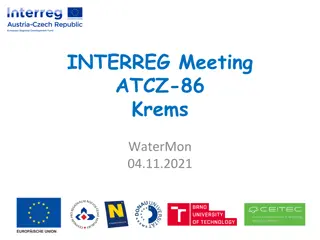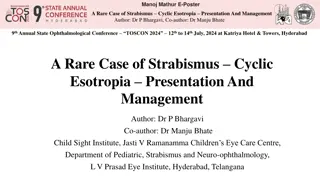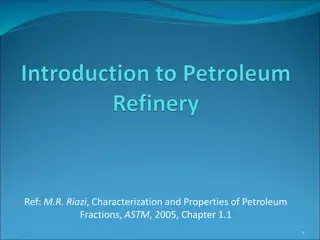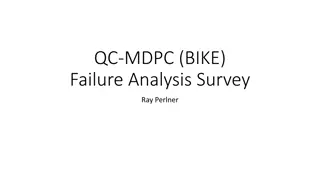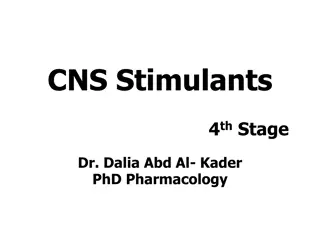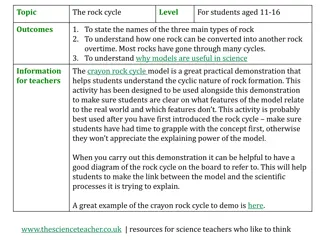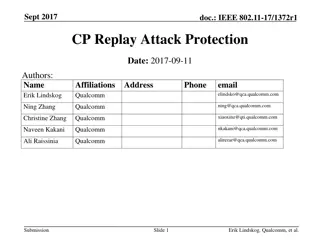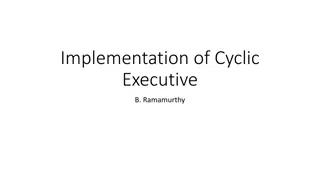Voltammetry: Principles and Applications
In voltammetry, current is measured as a function of changing potential. The magnitude of current is directly proportional to the activity or concentration of the analyte. A voltammogram is plotted between current and potential, showing the characteristic half-wave potential. The process involves a
7 views • 76 slides
Circle Geometry Principles
Explore key concepts in circle geometry such as angles subtended at the center and circumference, cyclic quadrilaterals, properties of tangents and chords, and the significance of major and minor segments. Uncover relationships between angles, segments, and points on a circle, including alternate se
3 views • 8 slides
Polarography in Electrochemical Analysis
Explore the realm of polarography, a type of voltammetry utilizing the dropping mercury electrode (DME) and mercury pool. Learn about classical polarographs, the Ilkovic equation, advantages and disadvantages of mercury drop electrodes, and how to minimize polarographic maxima in electrochemical ana
2 views • 23 slides
Structural Insights into D-Fructose: Chemistry Department Findings
Exploring the structural aspects of D-fructose, this content delves into the open chain structure limitations, pyranose and furanose structures, ring size determination, and Haworth projection formulae. Discover how the cyclic hemiketal structures resolve the shortcomings of the open chain represent
0 views • 11 slides
Photosynthesis in Bacteria and Cyanobacteria
Oxygenic photosynthesis in plants, algae, and cyanobacteria releases oxygen. Cyanobacteria utilize photosystems I and II in their light reactions, with distinct roles in light absorption and electron transfer. Cyclic photophosphorylation involves only photosystem I, while non-cyclic photophosphoryla
1 views • 10 slides
Basics of Group Theory in Mathematics
Introduction to sets in mathematics, concepts of semigroup and monoid, definition of a group, examples of subgroups, cyclic groups, normal subgroups, simple groups, and factor groups. Exploring fundamental principles in group theory.
0 views • 10 slides
Comprehensive Analysis of Fructose Ring Structures in Chemistry Department at GC Paonta Sahib
Explore the ring structures of D-(-)-fructose in the chemistry department at GC Paonta Sahib, including the limitations of the open-chain structure, pyranose and furanose structures, ring size determination, and Haworth projection formulae. Discover the complexities and intricacies of fructose isome
3 views • 11 slides
Baeyer-Villiger Oxidation: Mechanism and Migration Aptitude
The Baeyer-Villiger oxidation is a key organic reaction that transforms ketones into esters or cyclic ketones into lactones using peroxyacids. The mechanism involves protonation of the carbonyl group and migration of substituents. Migration aptitude in this reaction determines the regioselectivity,
0 views • 10 slides
Cyclic Codes: Generation and Examples
Cyclic codes are a subclass of linear block codes where any cyclic shift of a codeword results in another valid codeword. This article explains the generation of nonsystematic cyclic codes through polynomial multiplication and provides examples and code tables for both nonsystematic and systematic c
1 views • 11 slides
Circle Theorems and Equations of Circles
Explore circle theorems and equations of circles in geometry, including concepts like opposite angles in cyclic quadrilaterals, angles on a straight line, and important theorems like the perpendicular bisector of a chord passing through the center of a circle. Learn how to apply these theorems to fi
0 views • 12 slides
Photophosphorylation and Oxidative Phosphorylation in Biochemistry
Phosphorylation is the process of ATP production from ADP, occurring in two main forms - Photophosphorylation and Oxidative Phosphorylation. Photophosphorylation involves utilizing light energy to convert ADP to ATP, with two types: Cyclic and Non-Cyclic. Oxidative Phosphorylation uses energy from t
0 views • 15 slides
Aromatic Hydrocarbons: Structure, Aromaticity, and Nomenclature
Aromatic hydrocarbons, with benzene as a key example, possess unique properties due to their highly unsaturated structures. The molecular formula of benzene is C6H6, and it exhibits resonance through a planar structure with sp2-hybridized carbons. To be classified as aromatic, a compound must have a
0 views • 19 slides
IEEE 802.11-20/0973r0 Cyclic Shift Values for Pre-NGV Modulated Fields
Introduction to the determination of cyclic shift values for pre-NGV modulated fields in the IEEE 802.11-20/0973r0 document. The proposal suggests using existing values defined for pre-VHT, specifically for L-STF, L-LTF, L-SIG, and VHT-SIG-A fields of the PPDU. References and a straw poll are also i
2 views • 5 slides
Cyclic Voltammetry in Electrochemical Analysis
Cyclic voltammetry is a crucial electroanalytical technique for studying electrochemical behavior. It involves sweeping potential in a cyclic manner to measure current responses, aiding in understanding redox processes, electron transfer kinetics, and coupled reactions. The technique requires carefu
0 views • 10 slides
Challenges and Innovations in Relational Engine Algorithms
Exploring the complexity of processing graph data in relational query engines, this content delves into the challenges faced, practices adopted in academia, and innovative solutions like LMS-NPRR, trie join, and specialized data structures. It discusses the difficulties in handling acyclic vs. cycli
0 views • 27 slides
Addressing Ocean Hypoxia Through Innovative Solutions
Reversing ocean hypoxia requires a paradigm shift towards cyclic nutrient use, increased efficiency in fertilizer use, and enhanced nutrient recovery from waste. The socioeconomic impacts of excess nutrients on marine ecosystems are substantial, highlighting the need for new partnerships and technol
0 views • 8 slides
Data Error Detection Techniques Overview
Two-dimensional parity and Cyclic Redundancy Check (CRC) are data error detection methods used to ensure data integrity during transmission. Two-dimensional parity involves organizing bits in a table to calculate parity bits for data units and columns, while CRC appends a string of zeros to the data
0 views • 20 slides
Notch Approximation for Low-Cycle Fatigue Analysis in Structural Components
Structural components subjected to multi-axial cyclic loading can be analyzed for low-cycle fatigue using notch approximation. By transforming elastic response into an elastoplastic state, the computation time is reduced, and fatigue evaluation is done based on the Smith-Watson-Topper model. Strain-
0 views • 4 slides
Disaster Management: Types and Phases
A sudden calamitous event can bring immense damage, loss, and disruption to life and property, affecting the socio-economic, political, and cultural state of a region. Disasters can be natural or man-made, leading to major or minor disruptions. Effective disaster management involves recognizing key
0 views • 22 slides
Real-Time Systems Design and Implementation Insights
Explore the theoretical foundations and practical applications of real-time kernels in operating systems. Learn about task management, synchronization, intercommunication techniques, and design considerations for real-time systems. Dive into state-driven code, pseudo-kernels, and cyclic executives f
0 views • 50 slides
Elastoplastic Low-Cycle Fatigue Analysis of Cylinder with Hole
Structural component subjected to cyclic loading experiences localized plasticity, requiring full elastoplastic simulation. Stable load cycle achieved after simulating two cycles, with fatigue prediction based on Smith-Watson-Topper model for low-cycle fatigue evaluation.
0 views • 4 slides
Developing MPI Programs with Domain Decomposition
Domain decomposition is a parallelization method used for developing MPI programs by partitioning the domain into portions and assigning them to different processes. Three common ways of partitioning are block, cyclic, and block-cyclic, each with its own communication requirements. Considerations fo
1 views • 19 slides
Important Facts About Nicotine: Usage, Properties, and Sources
Nicotine is a stimulant and parasympathomimetic alkaloid naturally produced in nightshade family plants. It is used in smoking cessation. Nicotine is a hygroscopic liquid, soluble in various substances, and undergoes conversion processes under specific conditions. It has two enantiomeric forms and i
0 views • 15 slides
Overview of Draft Risk Evaluation for Cyclic Aliphatic Bromide Cluster (HBCD)
The overview discusses the draft risk evaluation of the Cyclic Aliphatic Bromide Cluster (HBCD) conducted by Eva M. Wong, Ph.D., from the Office of Pollution Prevention and Toxics, U.S. Environmental Protection Agency. It covers sections on exposure, hazards, risk characterization, risk determinatio
0 views • 13 slides
Cyclic Voltammetry in Electrochemical Methods
Electrochemical methods, such as cyclic voltammetry, are crucial for studying electron transfer processes, redox reactions, and adsorption on surfaces. Cyclic voltammetry involves varying the applied potential at a working electrode to monitor electron flow and chemical reactions. Peaks in the curre
0 views • 11 slides
Electrochemical Sensing Module Overview and Potentiostat Parameters
In this meeting, the Electrochemical Sensing Module based on the EmStat-pico potentiostat was discussed. The module features precise, low-power control unit Arduino MKR Zero and supports techniques such as voltammetry and EIS. Potentiostat parameters include a full dc-potential range, EIS frequency
0 views • 16 slides
Simulation Results for LC-Optimized PHY Proposal in July 2019
The document presents simulation results for an LC-optimized PHY proposal for TGbb based on G.9991 PHY. It includes details on the simulation setup, frame detection results, header modulation, coding simulation results, payload modulation, and coding simulation results. The setup involved various re
0 views • 18 slides
Insights on the Global Economy by Andrew K. Rose
The discussion by Andrew K. Rose highlights various aspects of the global economy, including cyclic upturns, potential trade and real wars, fiscal challenges, population aging, and low productivity growth. The American fiscal and monetary policies, along with future trends in capital flows and excha
0 views • 19 slides
Managing Cyclic Esotropia in a 6-Year-Old Child: A Case Report
A rare case of cyclic esotropia in a 6-year-old child is presented, highlighting the diagnosis, management, and successful outcome post bilateral medial rectus recession surgery. Primary cyclic esotropia, common in hyperopic children, was effectively treated with horizontal muscle surgery, leading t
0 views • 6 slides
Petroleum Hydrocarbons and Their Properties
Petroleum is a complex mixture of hydrocarbons, including paraffins, olefins, naphthenes, and aromatics. Paraffins are fully saturated and stable, olefins are unsaturated with double bonds, naphthenes are cyclic saturated hydrocarbons, and aromatics are cyclic unsaturated hydrocarbons containing ben
0 views • 19 slides
BIKE Cryptosystem: Failure Analysis and Bit-Flipping Decoder
The BIKE cryptosystem is a code-based KEM in the NIST PQC standardization process, utilizing the Niederreiter variant of the McEliece Construction with a QC-MDPC code. It ensures security against IND-CPA, and efforts are made to further confirm or disconfirm its estimates for IND-CCA security requir
0 views • 14 slides
Zero-Padded Waveform for Secure Channel Estimation in IEEE 802.11-17
Security is a vital aspect in IEEE 802.11az, particularly in secure ranging applications. This document introduces zero-padded waveforms to protect channel estimation against attackers aiming to manipulate the range of STAs. The proposal outlines requirements, including the need to eliminate predict
0 views • 12 slides
Mechanism and Clinical Uses of CNS Stimulants
CNS stimulants, including psychomotor stimulants and hallucinogens, have diverse clinical uses but are also potential drugs of abuse. Psychomotor stimulants such as caffeine affect the CNS by translocating extracellular calcium, increasing cyclic adenosine monophosphate, and blocking adenosine recep
0 views • 29 slides
Overview of Different Types of Nucleic Acids in Viruses
Explore the diverse types of nucleic acids found in viruses, including ssDNA, dsDNA, ssRNA, dsRNA, single-stranded cyclic DNA, double-stranded cyclic DNA, single-stranded cyclic RNA, and double-stranded cyclic RNA. The provided images depict the various classifications, shedding light on the genetic
0 views • 10 slides
Exploring the Rock Cycle Using the Crayon Rock Cycle Model
This educational resource focuses on teaching students aged 11-16 about the rock cycle, including the types of rocks, how rocks transform over time, and the importance of models in science. It introduces the crayon rock cycle model as a hands-on demonstration to help students grasp the cyclic nature
0 views • 4 slides
Enhancing Wireless Security: IEEE 802.11-17/1372r1 Replay Attack Protection
The document discusses measures for enhancing security in wireless communication, focusing on protection against replay attacks. It covers aspects like encryption of sequences, considerations for PAPR, modification of cyclic prefixes, conveying encryption keys, nulling of CP for improved performance
0 views • 26 slides
Overview of BIKE Key Exchange Protocol by Ray Perlner
The BIKE (Bit-Flipping Key Exchange) protocol, presented by Ray Perlner, offers variants based on MDPC codes like McEliece and Niederreiter with a focus on quasi-cyclic structures. These non-algebraic codes show promise for key reduction, targeting IND-CPA security. The protocol features competitive
1 views • 18 slides
Cyclic Groups and Discrete Logarithms
Exploring the concepts of cyclic groups and discrete logarithms in group theory. This presentation covers the definition of generators, examples of cyclic groups, important theorems related to prime orders and cyclic groups, uniform sampling in cyclic groups, and the discrete logarithm problem. Exam
0 views • 14 slides
Implementation of Cyclic Executive in Real-Time Systems
Exploring the implementation of a cyclic executive in real-time systems through task specifications, scheduler design, and program code examples. This approach involves executing tasks in a predictable sequence within fixed time slots to achieve precise timing requirements.
0 views • 10 slides
Creating a Cyclic Arrow Diagram in PowerPoint
Learn how to design a visually engaging cyclic arrow diagram in PowerPoint by following a step-by-step tutorial. Start by adding shapes, duplicating, merging, and styling elements to create a professional and dynamic visualization of concepts or processes. Enhance your presentation skills with this
0 views • 13 slides
